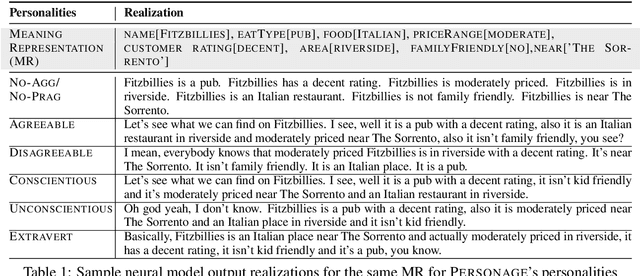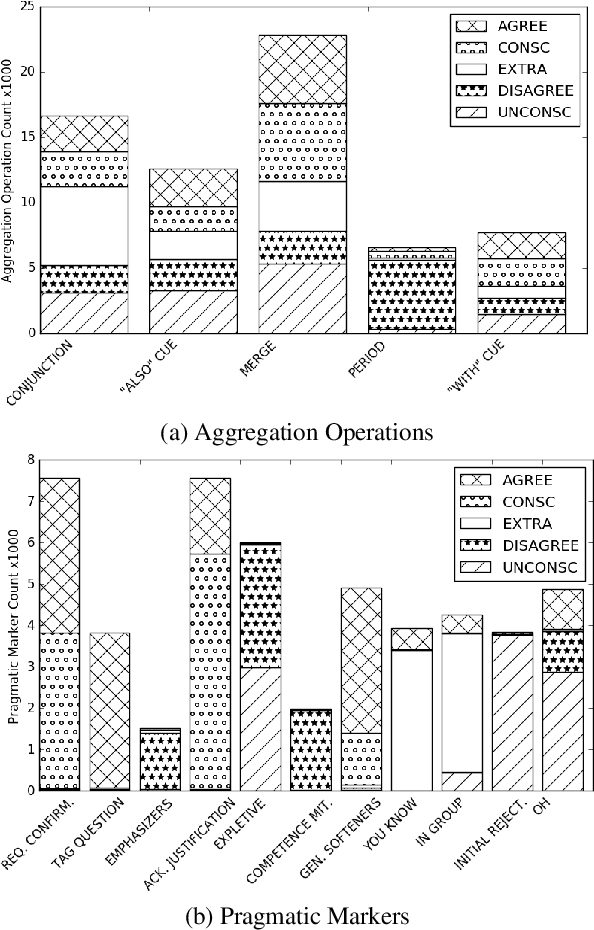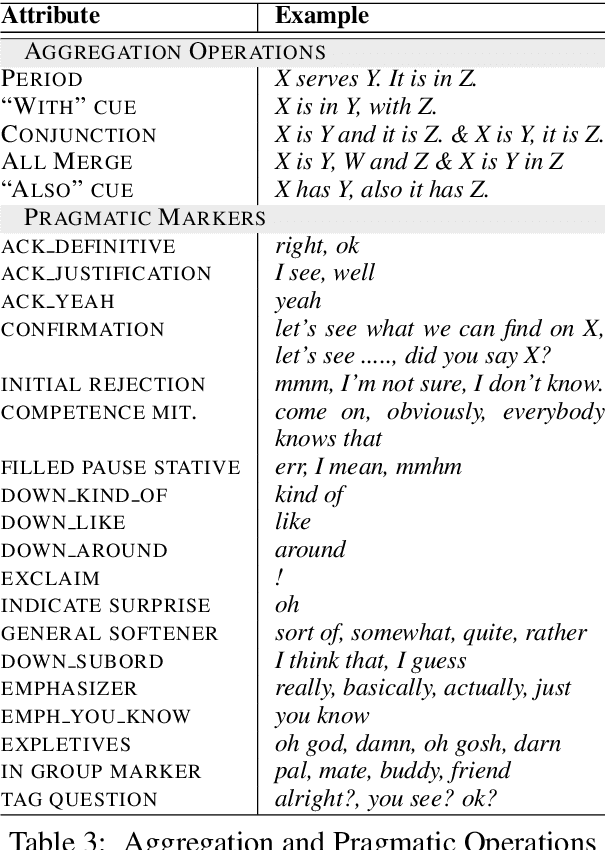Controlling Personality-Based Stylistic Variation with Neural Natural Language Generators
Paper and Code
May 22, 2018



Natural language generators for task-oriented dialogue must effectively realize system dialogue actions and their associated semantics. In many applications, it is also desirable for generators to control the style of an utterance. To date, work on task-oriented neural generation has primarily focused on semantic fidelity rather than achieving stylistic goals, while work on style has been done in contexts where it is difficult to measure content preservation. Here we present three different sequence-to-sequence models and carefully test how well they disentangle content and style. We use a statistical generator, Personage, to synthesize a new corpus of over 88,000 restaurant domain utterances whose style varies according to models of personality, giving us total control over both the semantic content and the stylistic variation in the training data. We then vary the amount of explicit stylistic supervision given to the three models. We show that our most explicit model can simultaneously achieve high fidelity to both semantic and stylistic goals: this model adds a context vector of 36 stylistic parameters as input to the hidden state of the encoder at each time step, showing the benefits of explicit stylistic supervision, even when the amount of training data is large.
 Add to Chrome
Add to Chrome Add to Firefox
Add to Firefox Add to Edge
Add to Edge